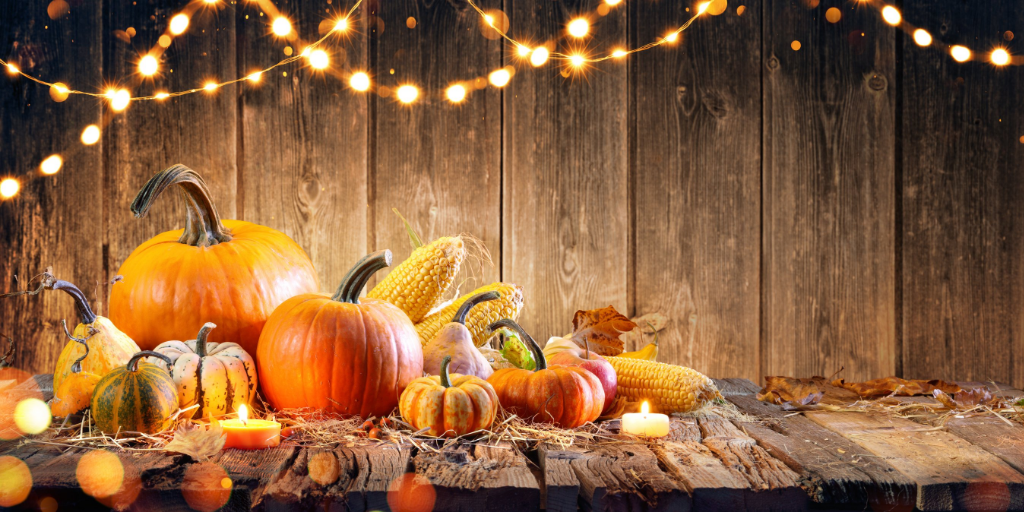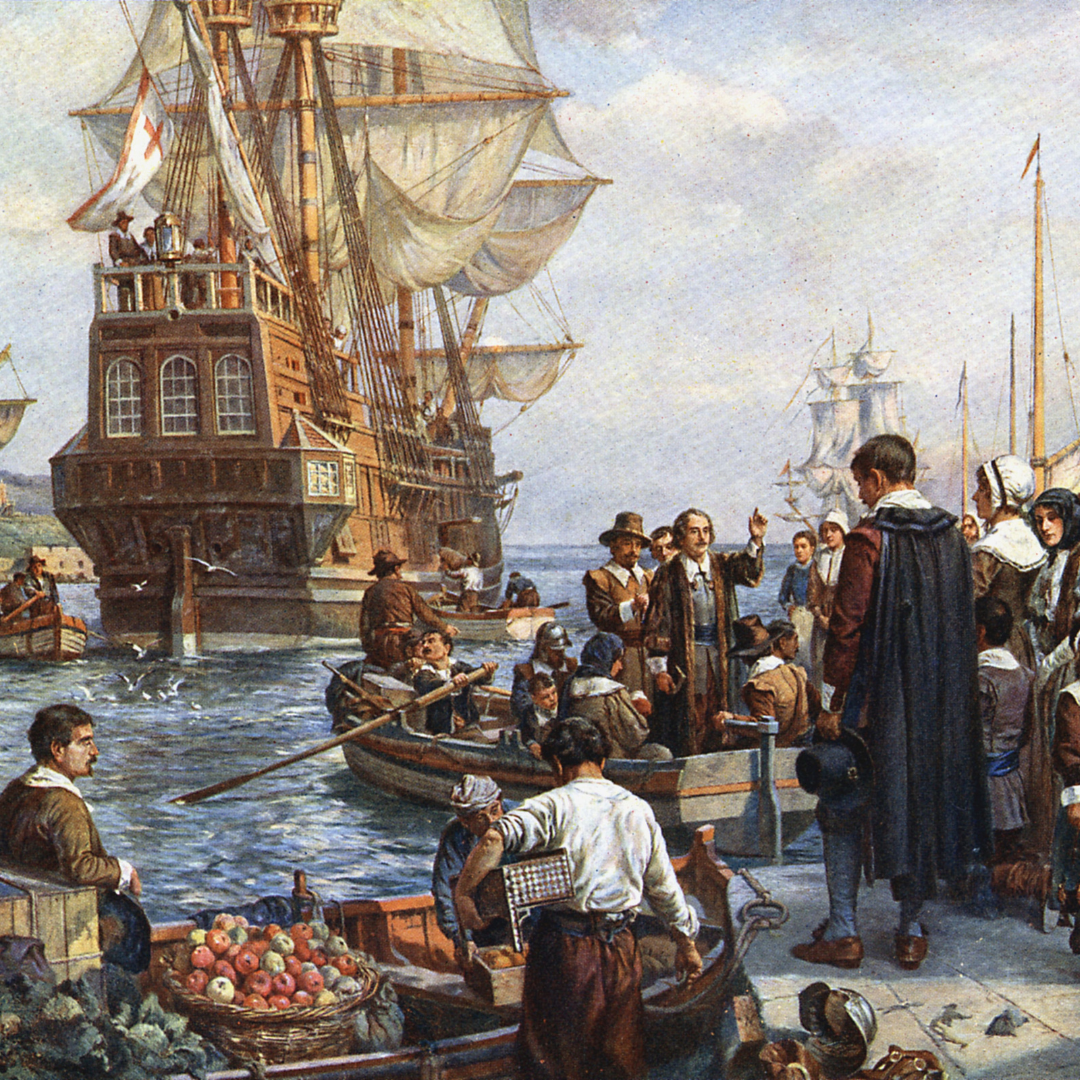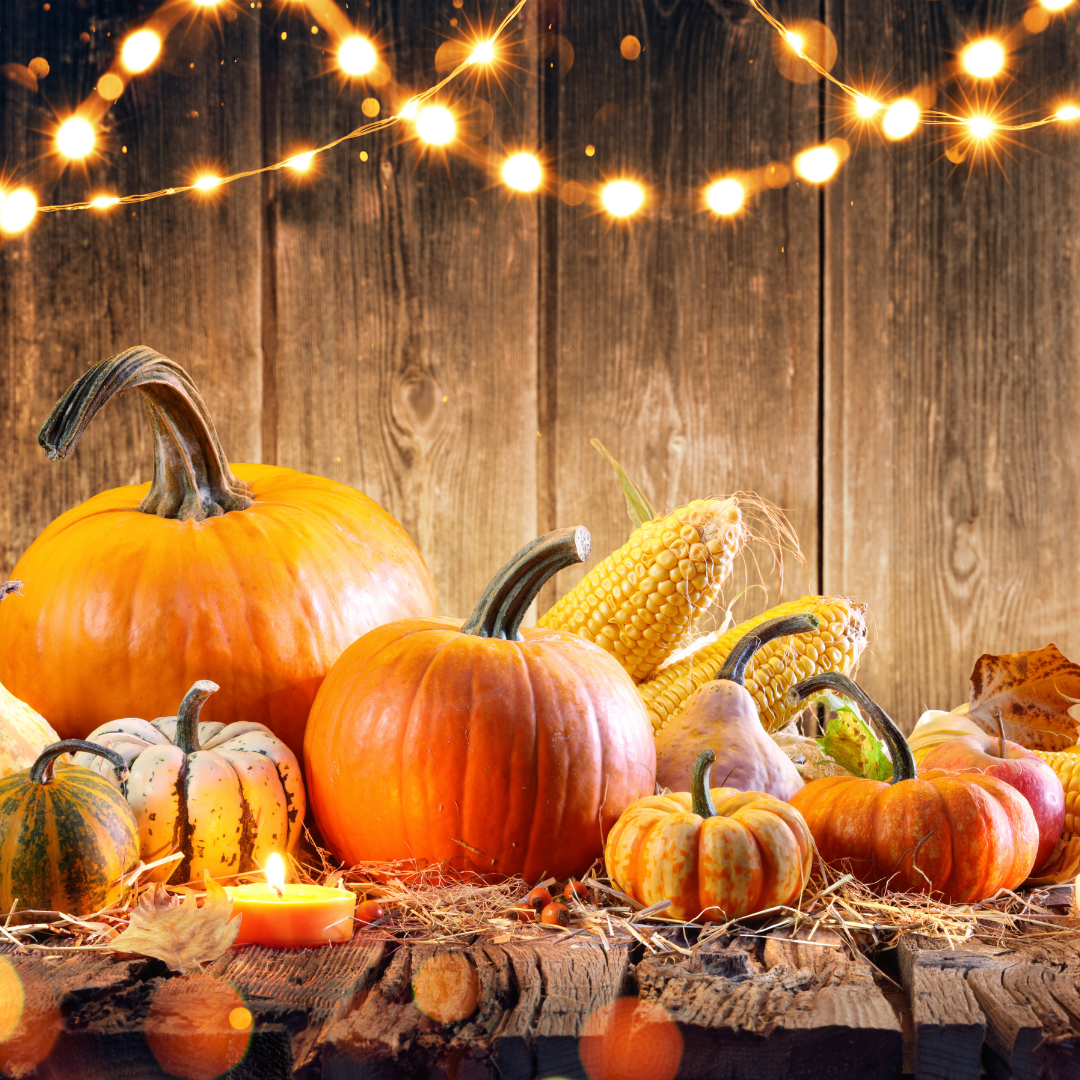
Lindsey Mitzel ponders the first Thanksgiving celebration, born of desperation and hope after a struggle to survive.
When I think back on learning about the first Thanksgiving, I can vaguely picture construction paper hats with a big square buckle pasted in the middle. My handprints, traced and cut out, became the body and feathers of a turkey. I know that some of the first Pilgrims shared an autumn feast to thank the Lord after enduring some hardship, but I honestly can’t tell you much more than that. This year, however, my homeschoolers are learning about the early colonists, and some blanks left from my own past have been filled as I read story after story to them about the first Thanksgiving.
The Pilgrims aboard the Mayflower set sail in September and arrived in Cape Cod Bay in November 1620. They mostly weathered the winter aboard the ship, rather than on land, and about half of the original 102 passengers died. The women took the greatest casualty — more than 75 percent of them died during their first winter. The Mayflower sailed back to Europe in early spring, leaving behind many children, a handful of women, and a few more men.
After settling in what is now known as the Plymouth Colony, or Plymouth, Massachusetts, the Pilgrims tried to make a home for themselves. My (still) limited understanding of this part of history, suggests that the Pilgrims were not particularly used to farming in Europe, and were not overly used to many of the crops we now see as common in North America. Regardless, they were ill-suited to survive the next winter in North America, and likely would have all died if it were not for the help of some local Wampanoags.

The first Thanksgiving, purportedly, was a harvest feast to celebrate the abundance of food the colonists were able to grow and hunt in their first year in the colony. They now had a shelter on land and enough food for survival over the coming winter. In contrast, the Thanksgivings of my past tend to center around a traditional menu, football, parades, and possibly starting to lug Christmas decorations up from the basement. The first Thanksgiving seems very primal — is there enough to survive? My Thanksgivings have placed more emphasis on trying to be grateful for always having enough. There were other poverties, but even those feel a bit pale in comparison to what I sense surrounding us today.
This year, I imagine most of us can relate more readily to the Pilgrims as they sat around the table for the first autumn feast. We have all witnessed death in the past few years, and for many of us, in a heightened way. There may be a real primal question — is there enough to survive? Is there enough food in the store? Is there enough money in the bank account? Is there enough hope? Is there enough grace? Is there enough faith?
I imagine the Pilgrims sitting down for their feast and for the first time, see mostly children. How hard the colonists must have worked, how little childhood the children must have had. How many children lost one or both parents that first winter? While they were grateful for the help Squanto and others offered and having enough basic necessities to hopefully survive another winter, I can imagine that joy may have been difficult to come by at that first feast. How much of it was mingled with great sorrow, or even confusion or anger or bitterness?
Some of us may not have had an abundance or even enough in our pasts. I pray that each of you have enough as you read this. It strikes me that the colonists, by many standards, really didn’t have enough going into their second winter in America. They had a good harvest. They had learned ways to hunt and to use the land around them a bit more. Most of them, however, had also buried one or more of their loved ones just months prior. Many of them may not have even been able to be buried, with the frozen ground of winter. Yet the hope of the first Thanksgiving seems palpable. There was enough in this.
God supplies for all our needs, however, not always in the ways we hope for and imagine. We also so often don’t even know what we truly need. I do know there is enough, no matter how it seems. As St. Teresa of Calcutta says, “God writes straight with crooked lines,” and He isn’t done writing His story yet.

Copyright 2021 Lindsey Mitzel
Images: Canva Pro
About the Author

Lindsey Mitzel
Lindsey Mitzel is a nurse practitioner and mom to six littles. When not homeschooling or driving her kids to various places, she enjoys gardening, hiking, and running. Lindsey appreciates dry humor, a good pun, and coffee. You can read more about her at Eight and a Half Months. Lindsey also occasionally writes for Be Love Revolution's Tiny Thoughts blog.


.png?width=1806&height=731&name=CatholicMom_hcfm_logo1_pos_871c_2728c%20(002).png)
Comments